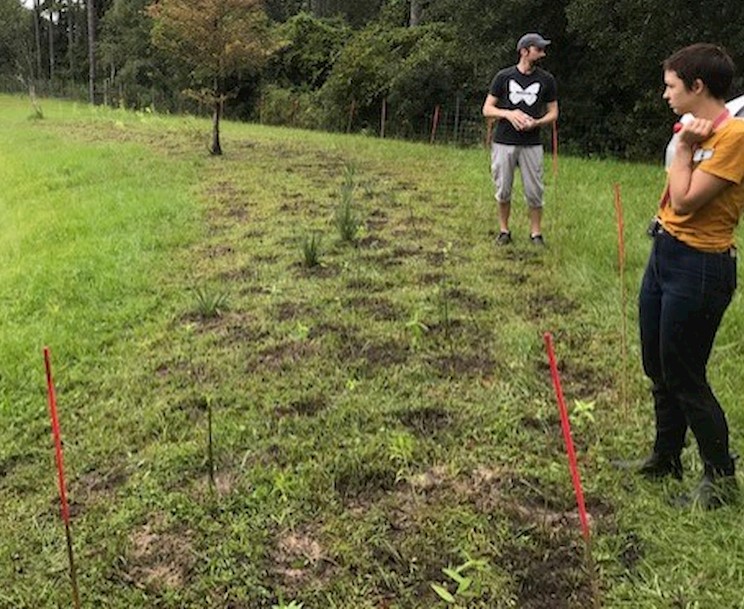Milkweed plants for Monarchs installed at retention basin
Almost 300 native milkweed and nectar-providing plants were installed along a highway retention basin on Alt. U.S. Highway 27 near Chiefland Tuesday. The effort is part of a Florida Museum of Natural History pilot project to increase roadway habitat for Monarch butterflies. It is funded in part by the Florida Wildflower Foundation.
Dr. Jaret Daniels and his team also planted two other roadway basins in North Central Florida. Approximately 287 plants are being installed at each site — 187 milkweeds and 100 nectar plants. Species include Pink milkweed (Asclepias incarnata), Swamp milkweed (Asclepias perennis), Leavenworth’s Coreopsis (Coreopsis leavenworthii), Button rattlesnakemaster (Eryngium yuccifolium), Swamp sunflower (Helianthus angustifolius) and Clustered bushmint (Hyptis alata). Additionally, three dry basins will be seeded with native wildflower seeds. “We hope to complete six to eight basins per year over two to three years,” Daniels said.

Photo by Jaret Daniels
Milkweed is the Monarch butterfly’s preferred host plant, but studies have shown its occurrence in the wild is decreasing due to development and herbicide use. Naturally occurring milkweed is often found along roadways, because they have sunny rights-of-way with disturbed soil. Carefully timed mowing should keep milkweed and other wildflowers flourishing.
Many of the milkweed plants for the project came from the St. Marks National Wildlife Refuge nursery, where Ranger Scott Davis and volunteers have cultivated thousands of the plants.
The project is also supported by the Disney Conservation Fund.
